Grevillea insignis
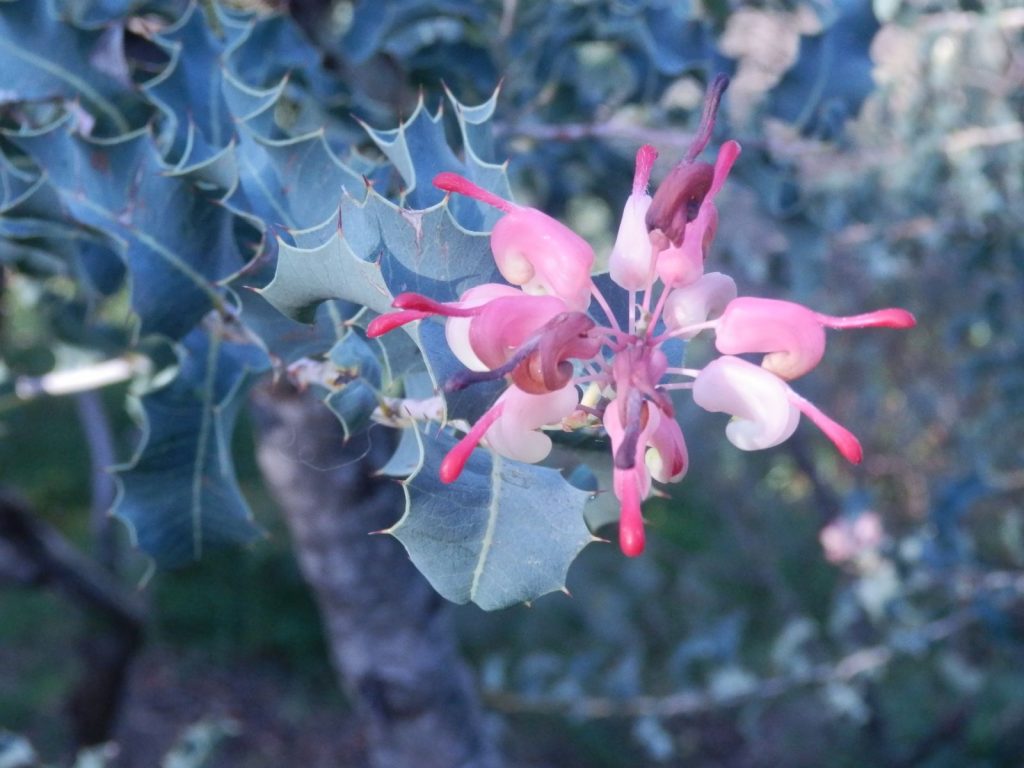
Grevillea insignis – A shrub growing to 5 metres tall with spreading/arching branches which can spread several metres wide.
Grevillea ‘Misty Pink’
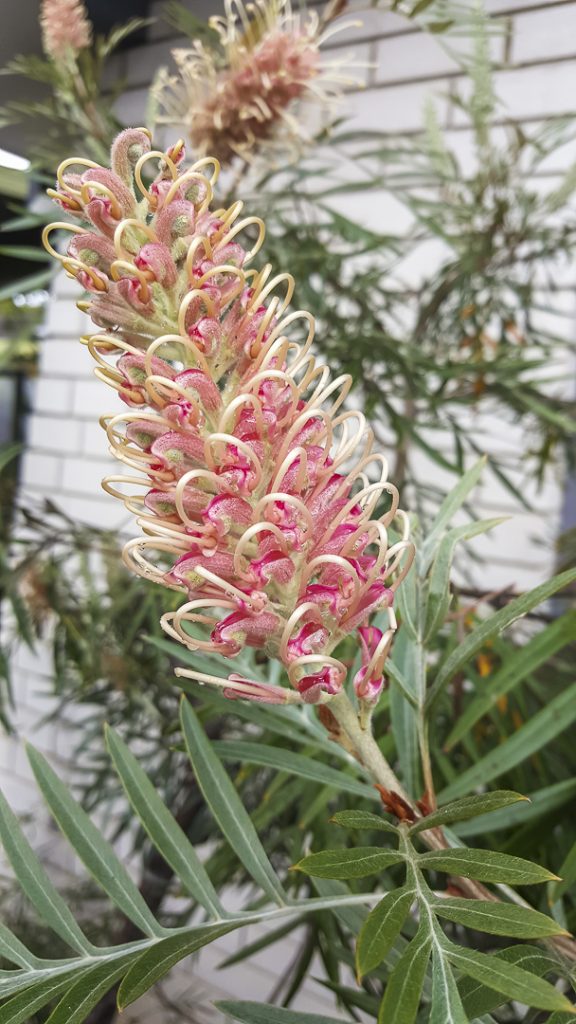
Grevillea ‘Misty Pink’ – A large shrub growing to 4 x 3 metres.
Grevillea petrophiloides
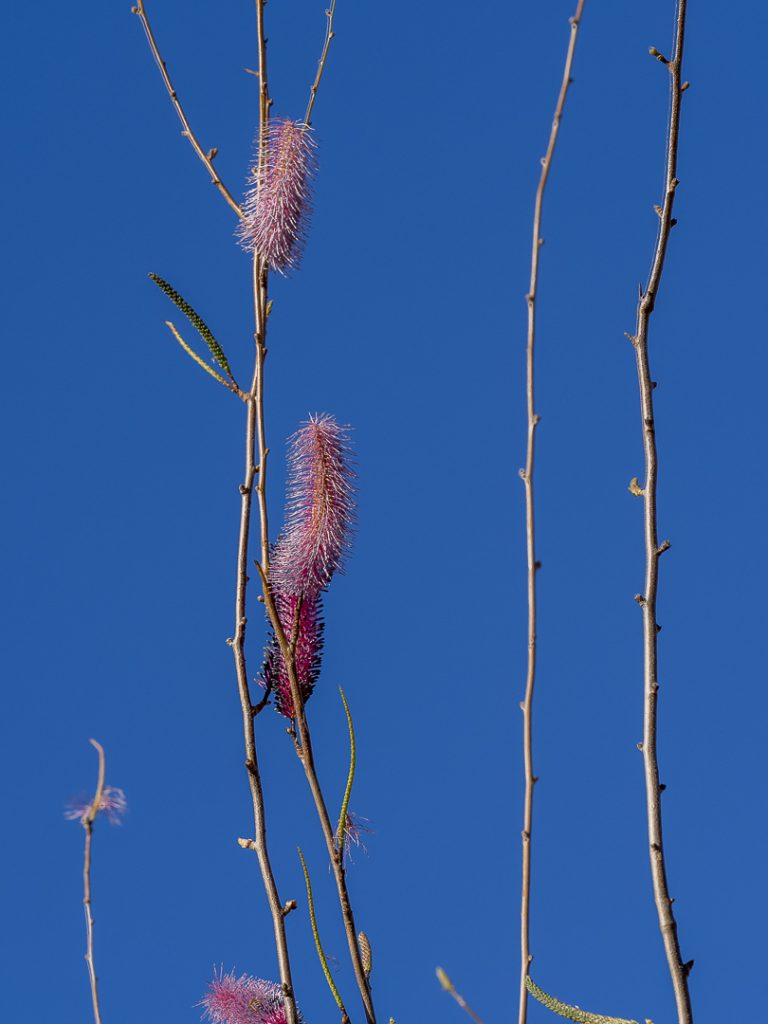
Grevillea petrophiloides – An erect and very open shrub, to 3 metres tall and spreading potentially to 3 metres wide.
Grevillea ‘Flora Mason’
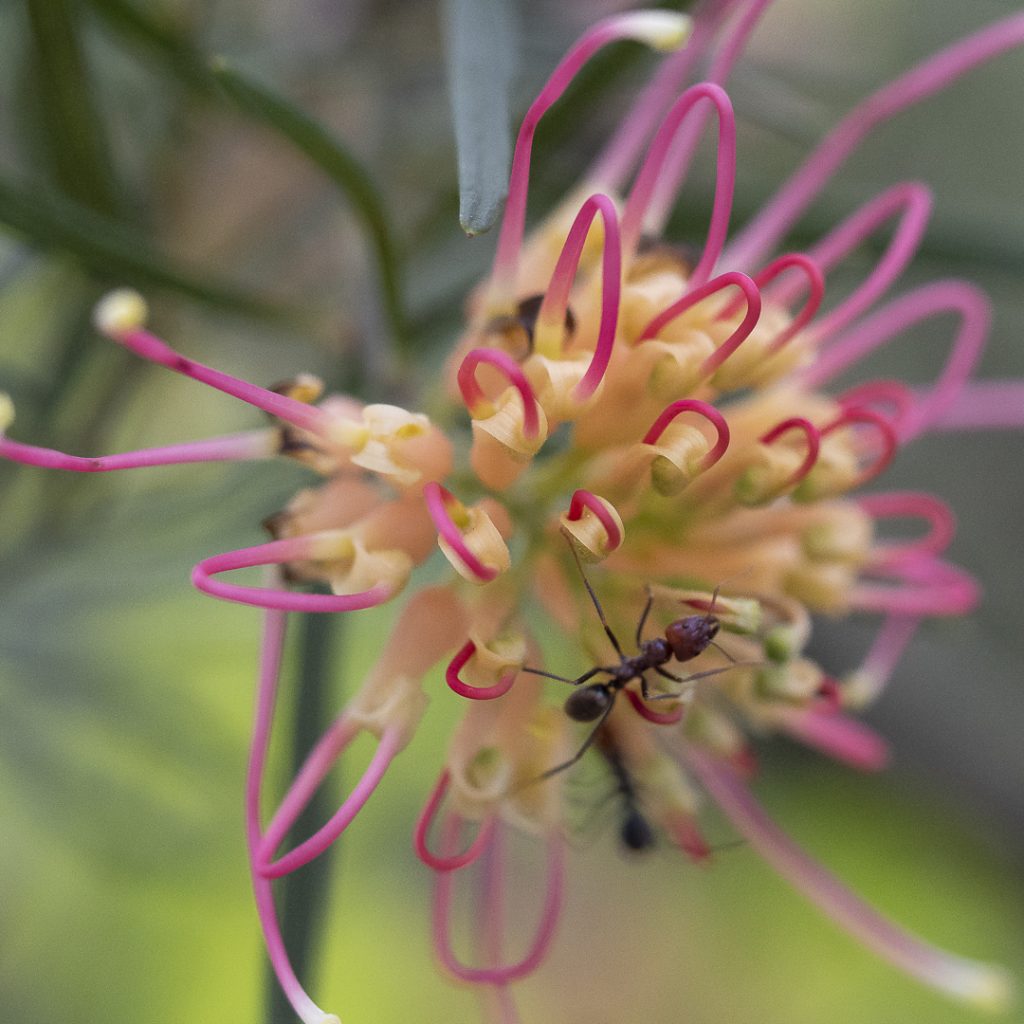
Grevillea ‘Flora Mason’ – – A shrub growing potentially to 3 x 3 metres or more wide but can be kept shorter through pruning.
Grevillea georgeana
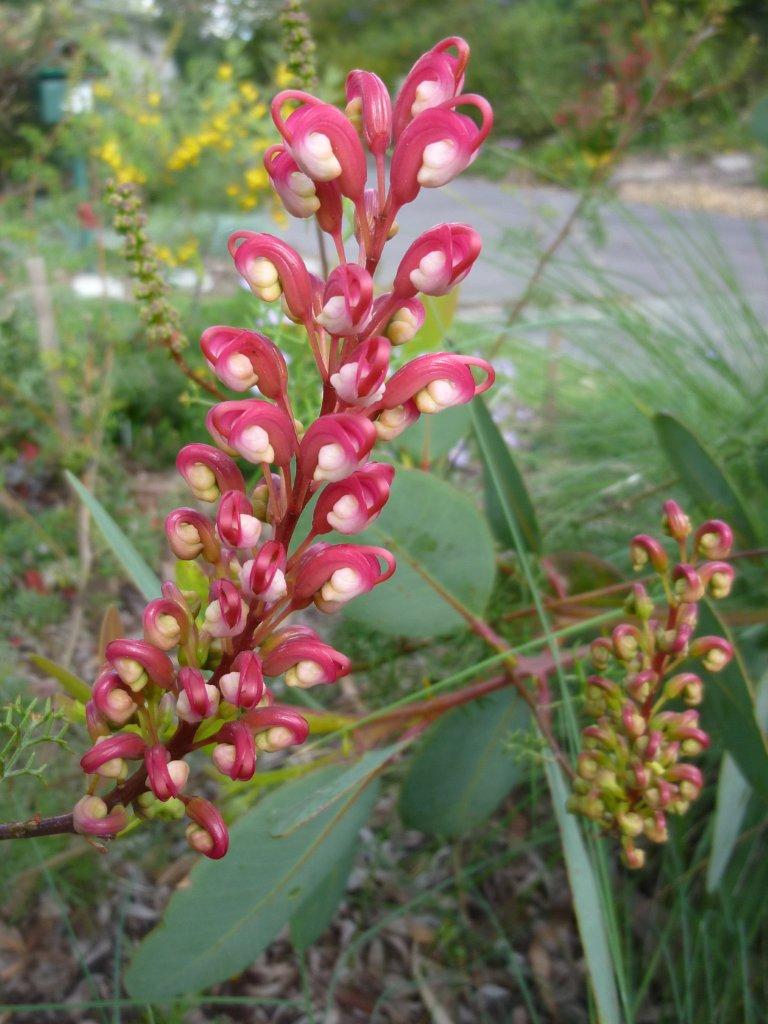
Grevillea georgeana – It is endemic to Western Australia, occurring in the hills and mountains between Koolyanobbing and Diemals, in the Coolgardie and Murchison regions.
Grevillea venusta
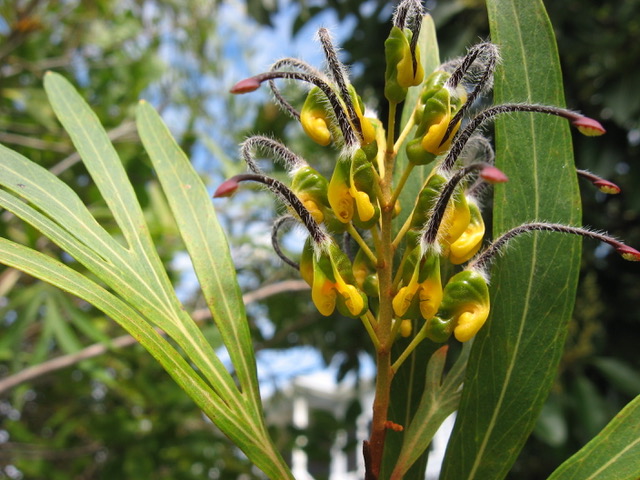
Grevillea venusta – A large erect to spreading shrub to 5 metres high by 2 metres wide.
Grevillea ‘Superb’
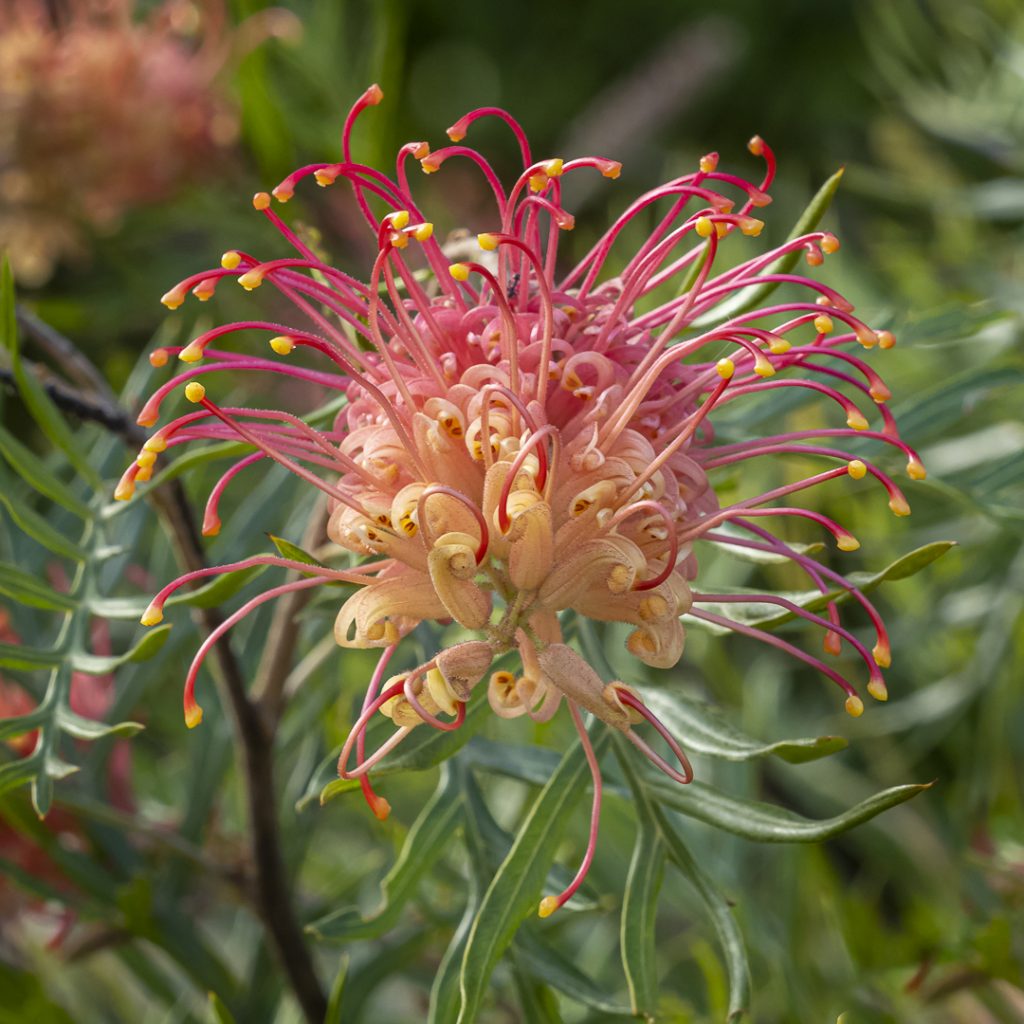
Grevillea ‘Superb’ – A cultivar with a popular history. It is a shrub growing to about 2 x 2 metres and with a dense, compact habit with pruning.
Grevillea ‘Coconut Ice’
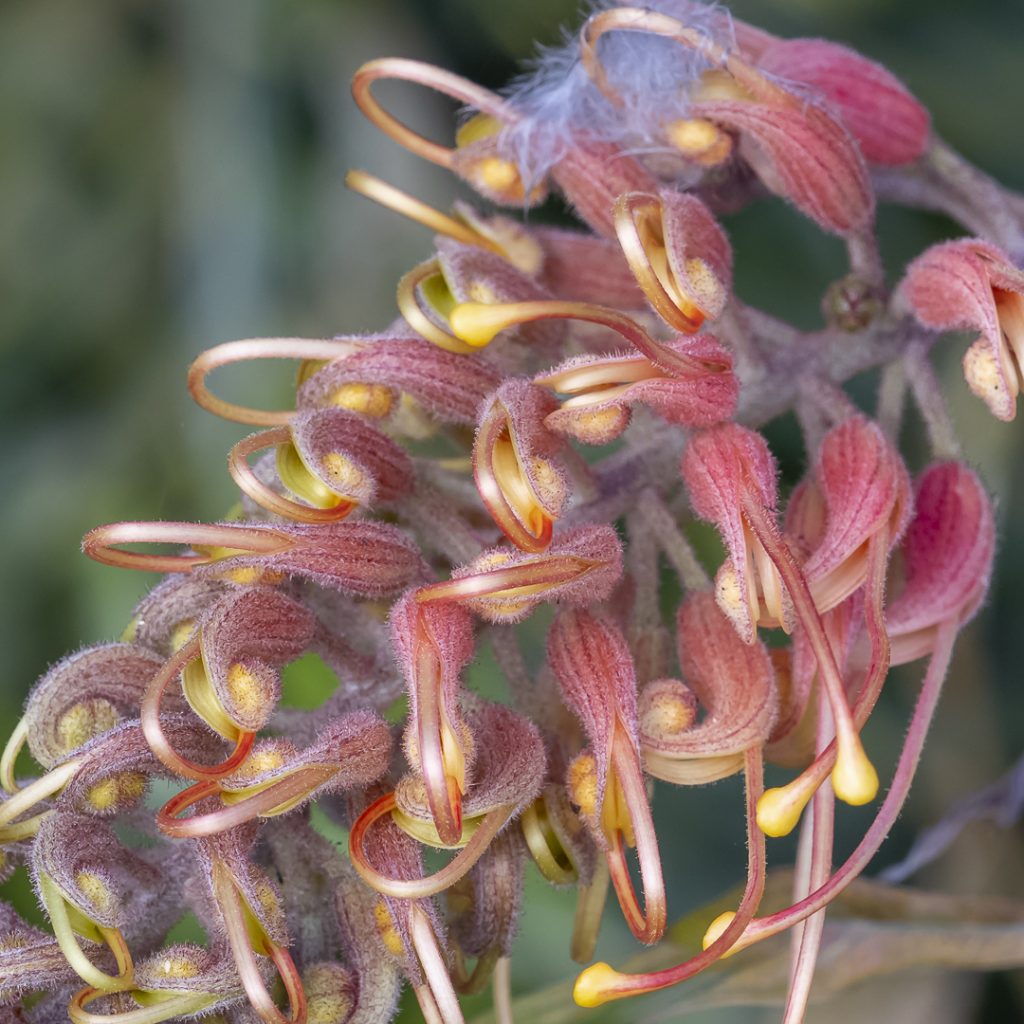
Grevillea ‘Coconut Ice’ – A cultivar with a very popular history. It is a shrub growing to 2 x 2 metres and has a dense, compact habit.
Grevillea ‘Ivory Whip’

Grevillea ‘Ivory Whip’ – A stunning open shrub growing to 1.5 metres tall x 3 metres wide.
Grevillea ‘Billy Bonkers’
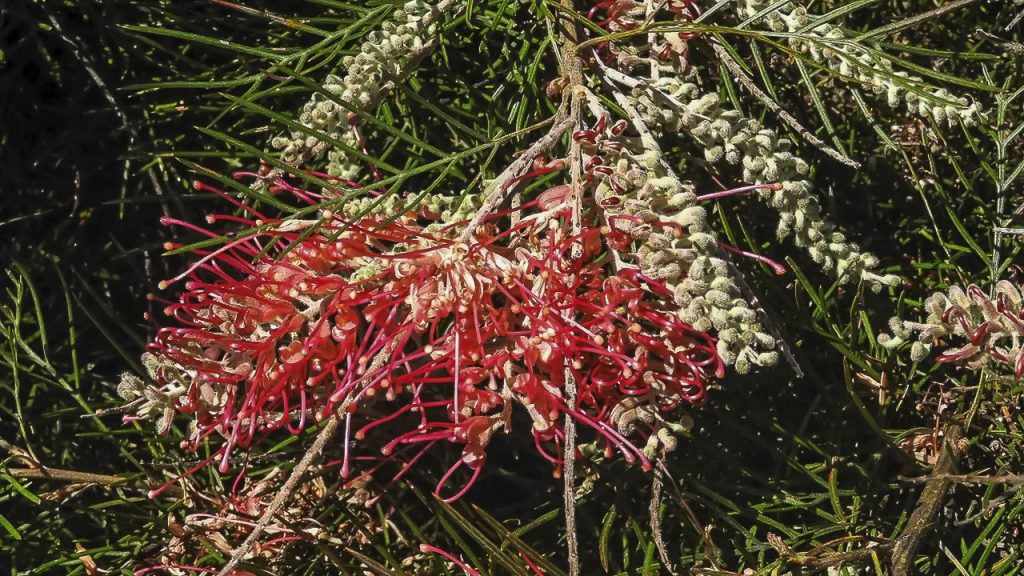
Grevillea ‘Billy Bonkers’ – A low growing shrub to about 1 metre tall, spreading to 3 metres wide. This cultivar was introduced by Richard Tomkin…
Grevillea ‘Flamingo’
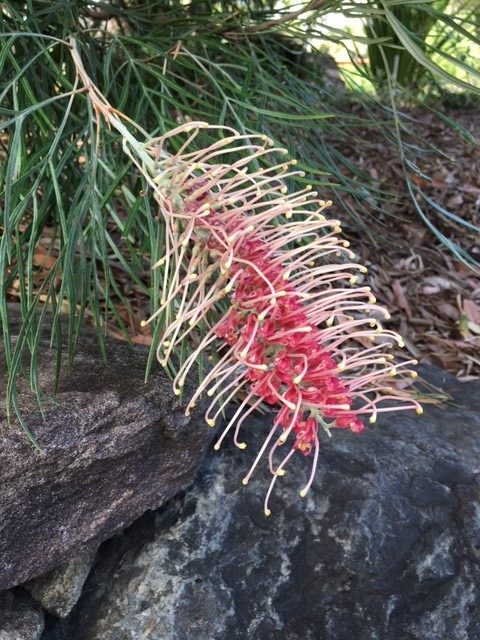
Grevillea ‘Flamingo’ – A popular cultivar. It is a spreading to weeping shrub, growing to 3 x 3 metres and has can have a dense compact habit. It is reportedly a hybrid …
Grevillea ‘Spider Mist’
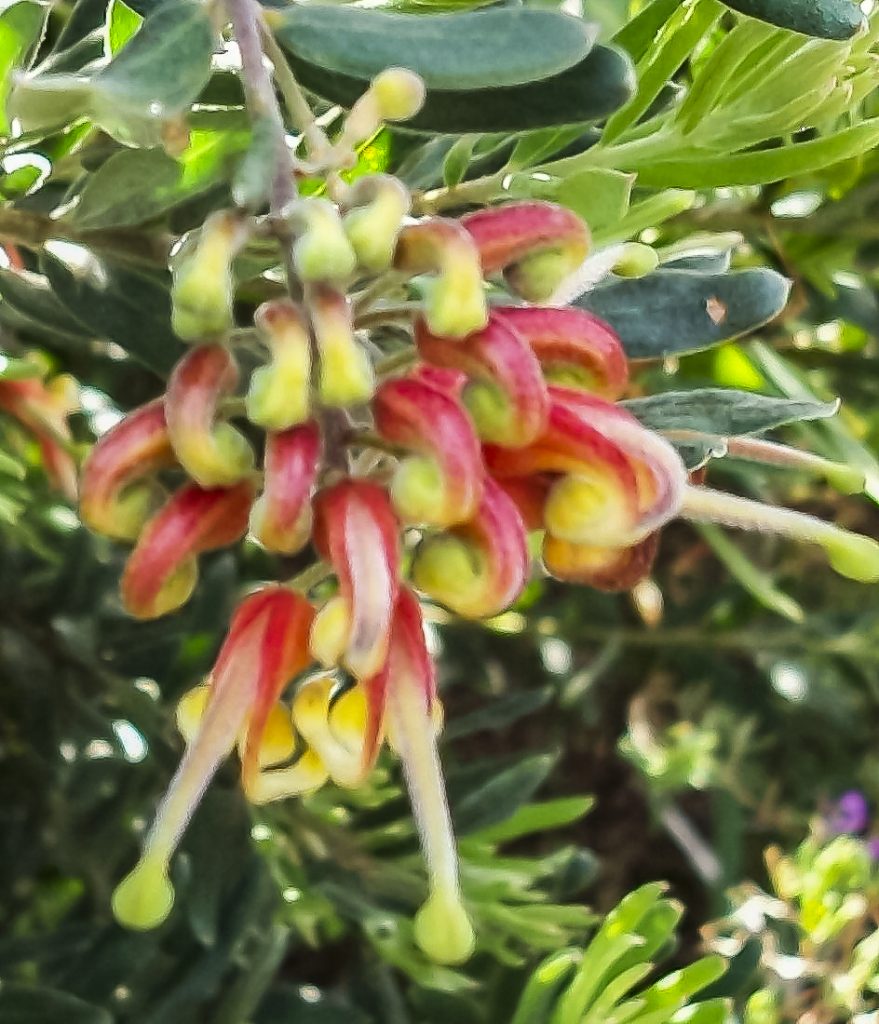
Grevillea ‘Spider Mist’ – This is a medium-size compact rounded shrub that typically grows up to a height of 2 metres by 2 metres wide. It has been brought into cultivation by member Brian Roach from a seedling in his garden.
Ceratopetalum ‘Johanna’s Christmas’
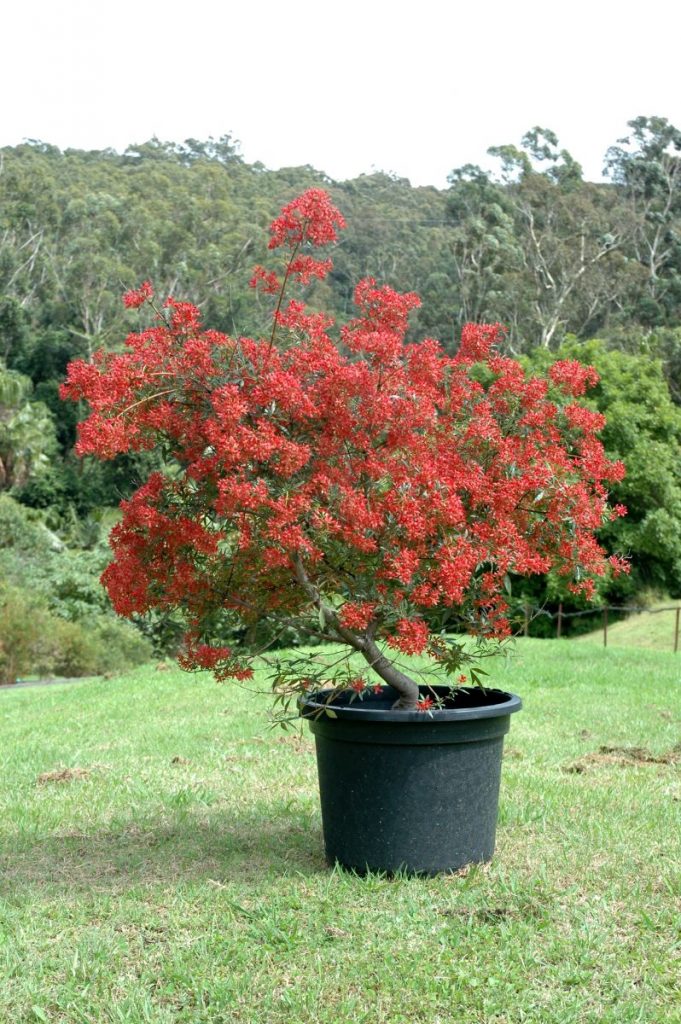
Ceratopetalum ‘Johanna’s Christmas’ – This cultivar is a dwarf form of Ceratopetalum gummiferum. It is a dense shrub to 1.5 m tall x 1.5 m wide. Registered with ACRA by Brian and Carol Roach of Westleigh, Sydney on 14 Jan 2004.
Grevillea flexuosa
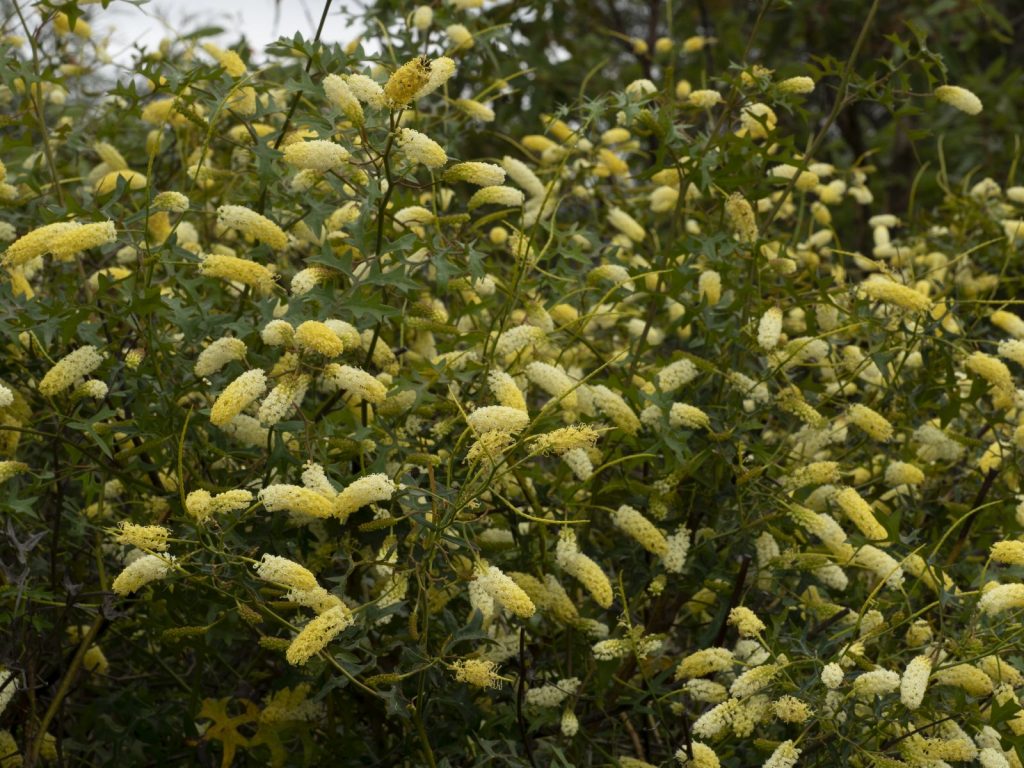
Grevillea flexuosa – A shrub growing to 2 m tall with spreading/arching branches which can spread several metres wide. It is a threatened species growing in Western Australia and is found naturally in the south-west region, north-east of Perth, typically growing in Jarrah Forest.
Grevillea ‘Lollypops’
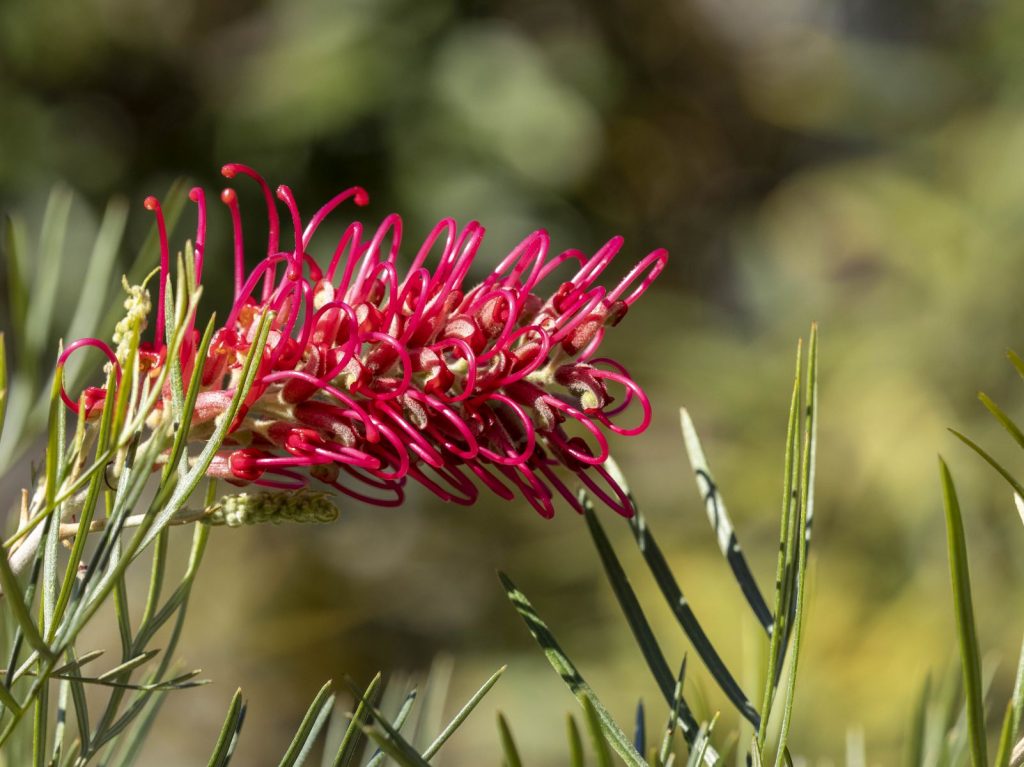
Grevillea ‘Lollypops’ – A shrub growing to 1.5 x 1.5 metres. It is a resulting seedling of Grevillea ‘Billy Bonkers’. It was bred by Richard Tomkin at a nursery in Queensland (see ‘Billy Bonkers’ profile for parentage; Grevillea banksii is largely involved).
Grevillea ‘Blood Orange’
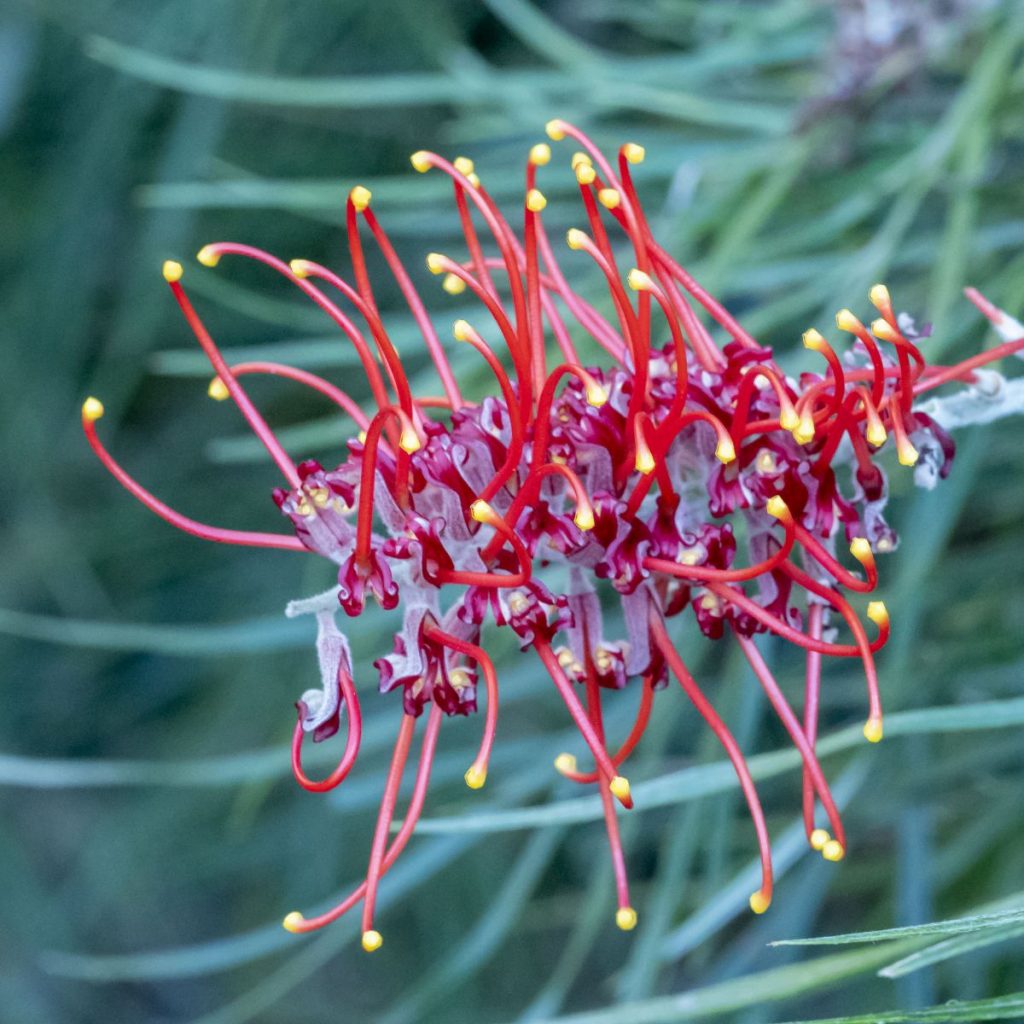
Grevillea ‘Blood Orange’ – A shrub growing to 3 x 3 metres. This cultivar was introduced by Chris Hughes at Plants for Living Nursery at Federal NSW, from a seedling that came up in the nursery. The parentage is not, as yet, known for the purposes of this profile. It is likely associated with the G. banksii group of cultivars.
Grevillea ‘Kimberley Gold’
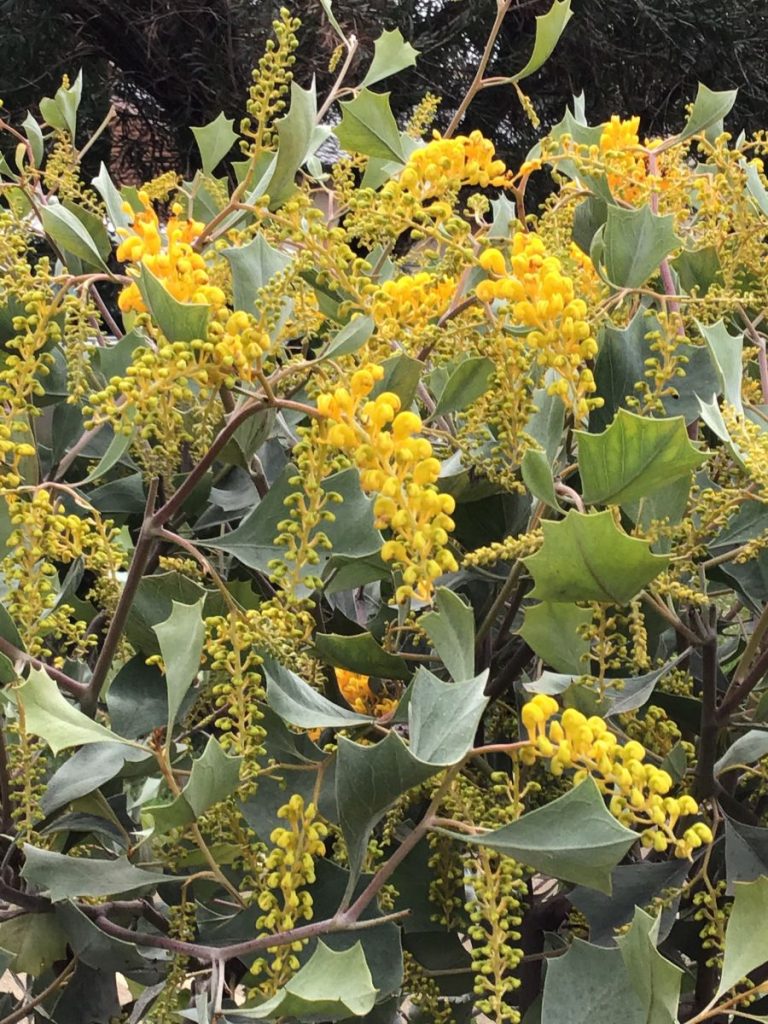
Grevillea ‘Kimberley Gold’ – A stunning open shrub growing to 2 metres tall x 3 metres wide. It is reported to be a hybrid of G. wickhammii (a species found in WA, NT and Qld) and G. miniata (a species also found in WA and NT). Leaves are grey-green with a holly-like shape, to about 7 cm long and 4 cm wide, generally ovate in shape with conspicuous and broad lobes/teeth on the margin. The leaves also have a long thin petiole.
Grevillea ‘Honey Jo’

A cultivar registered by Carol and Brian Roach on behalf of the ANPS Grevillea Study Group. Originally, a single plant was purchased by Carol and Brian Roach approximately 30 years ago, and consequently discovered to be incorrectly labelled as Grevillea ‘Poorinda Hula’.
Prostanthera askania
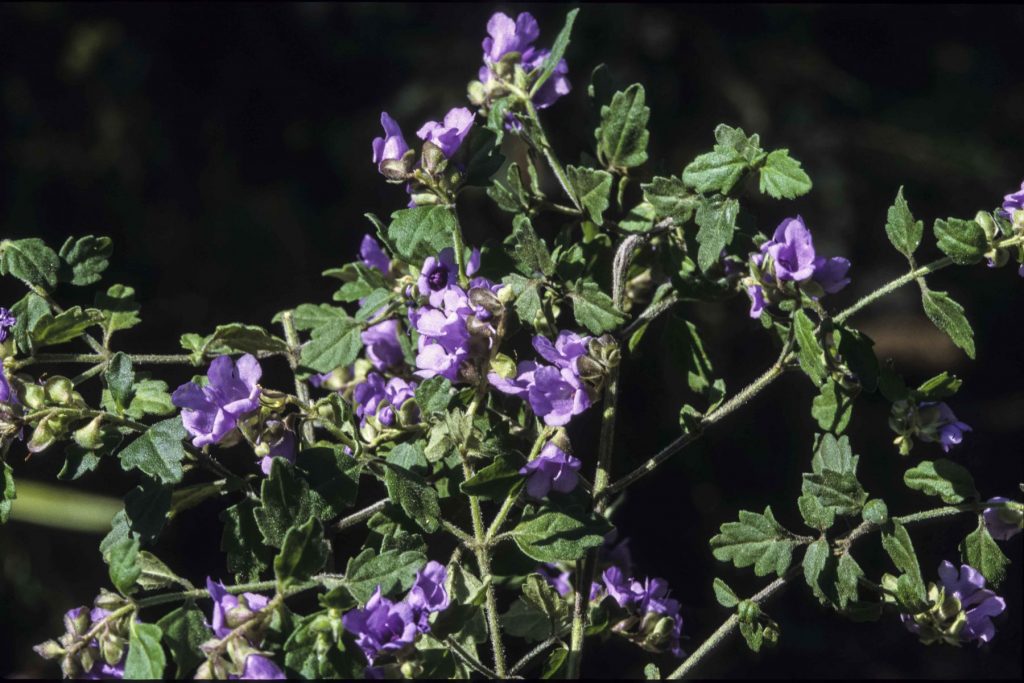
Prostanthera askania – An erect to spreading and sometimes scrambling, openly-branched shrub that grows to 3 metres high. Occurs in moist sclerophyll forest and warm temperate rainforest communities, and the ecotone between them. It has a very restricted geographic range, in the central coast subdivision of NSW, found on the upper reaches of creeks that flow into Tuggerah Lake and Brisbane Waters, within the Wyong and Gosford local government areas. It is listed as threatened with extinction in the wild.
Grevillea ‘Long John’
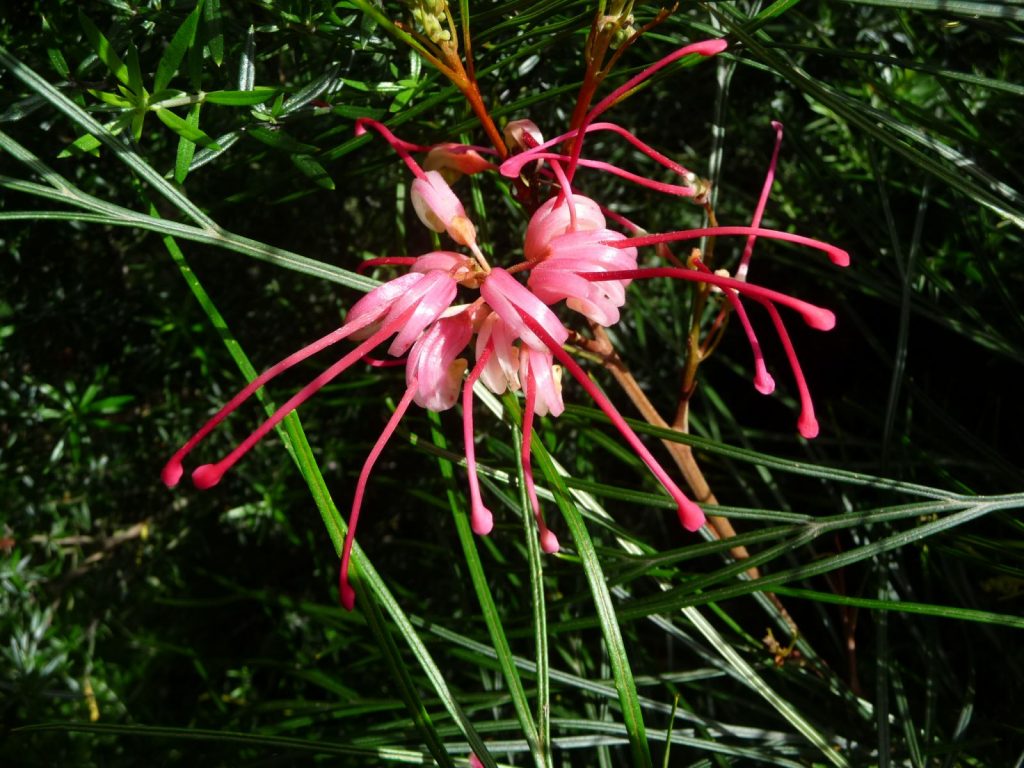
Grevillea ‘Long John’ – A shrub that grows to 3 metres high by 5 metres wide. It is reported to be a cross between Grevillea johnsonii x G. longistyla (a NSW species and a QLD species respectively). It also goes by the synonymous cultivar name of Grevillea ‘Elegance’. However, ‘Long John’ is the accepted registered name.
Grevillea johnsonii
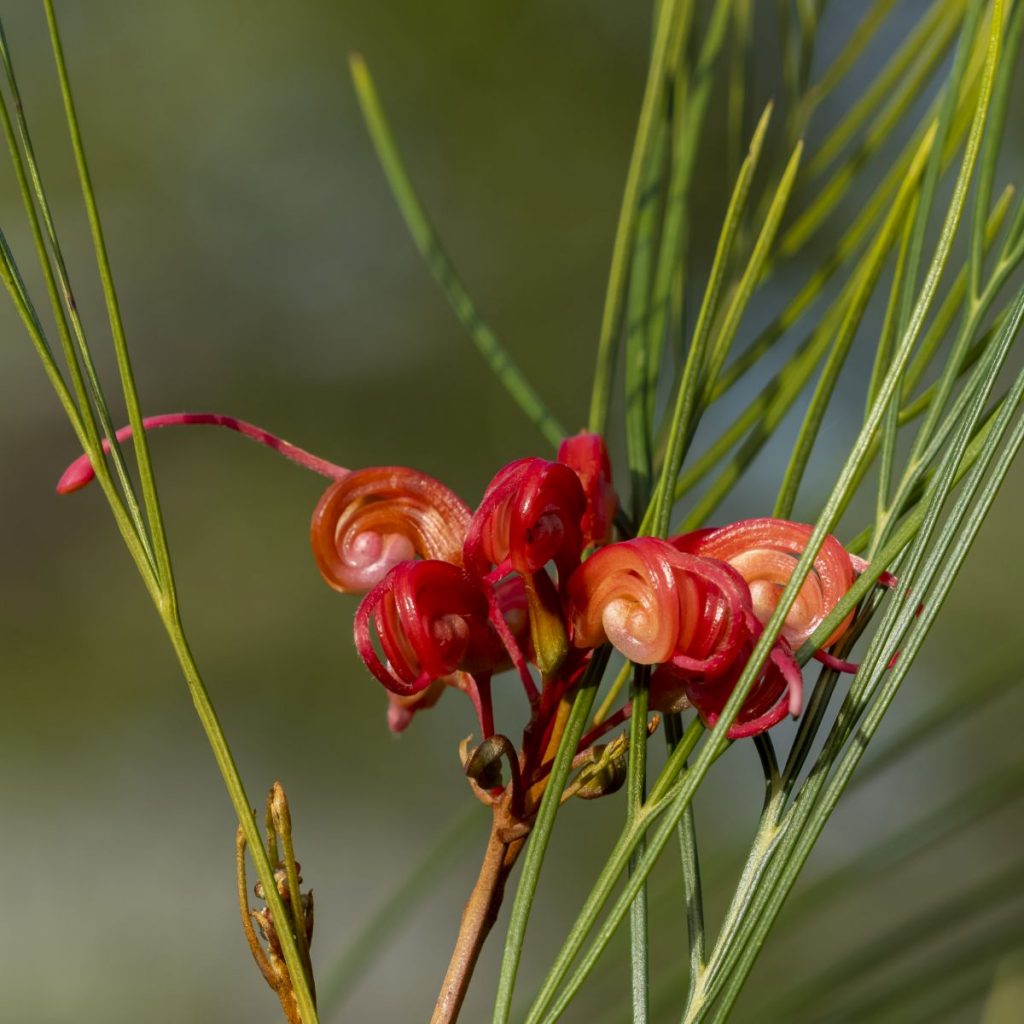
Grevillea johnsonii – A shrub that typically grows to a height to 4.5 metres, often around 2 metres. It is found on sandstone – rocky habitats, in the Capertee and Goulburn River catchments, north-west of Sydney in the central tablelands and central western slopes divisions. There are also some unsubstantiated records from the south-coast of NSW.
Grevillea ‘Goliath’
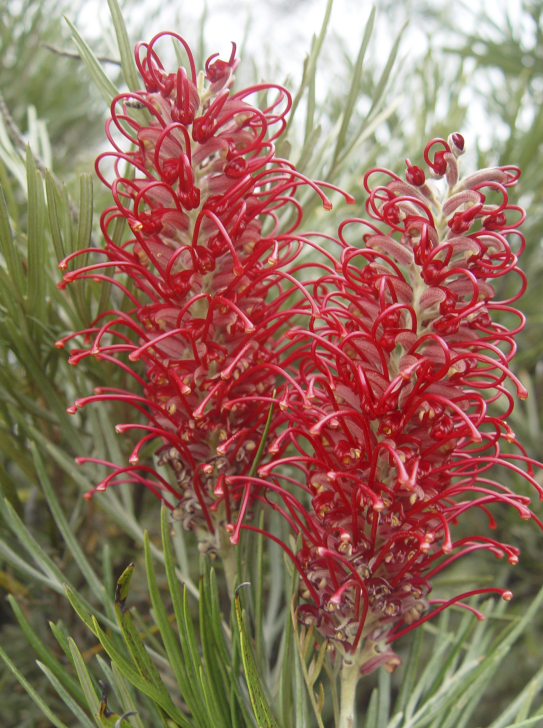
Grevillea ‘Goliath’ – A grafted shrub growing to 4 m tall by several metres wide. It was developed by well known Grevillea breeder, the Late Merv Hodge (1933-2019). It appears to be associated with the Grevillea banksii cultivars and is possibly a hybrid of G. banksii x G ‘Majestic’.
Grevillea ‘Robyn Gordon’

Grevillea ‘Robyn Gordon’ – A cultivar with a very popular history. It is a shrub growing to 2 x 2 metres and has a dense, compact habit. It is the one of the resulting offspring of G. banksii x G. pinnatifida.
Grevillea ‘Moonlight’
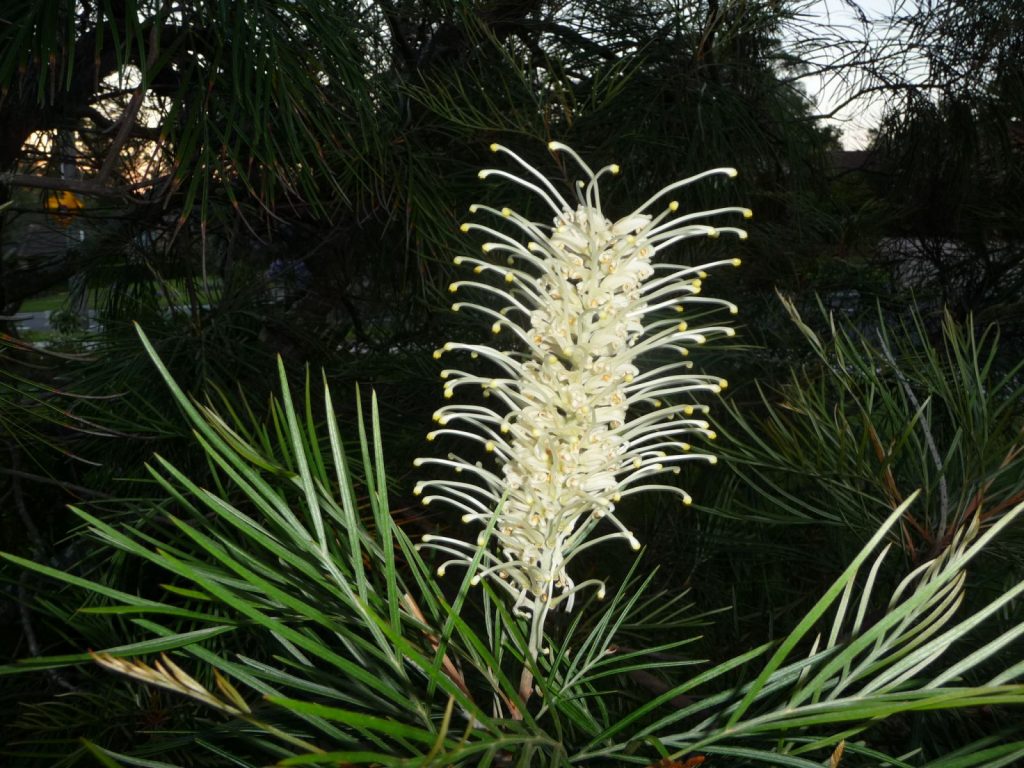
Grevillea ‘Moonlight’ – A cultivar with a very popular history. It is a large, spreading shrub growing to 5 x 4 metres and has a dense, compact habit. It is reported to be a selected form of Grevillea whiteana. However, there is published genetic data that it is the progeny of a cross between G. banksii and G. whiteana.
Grevillea ‘Ivanhoe’
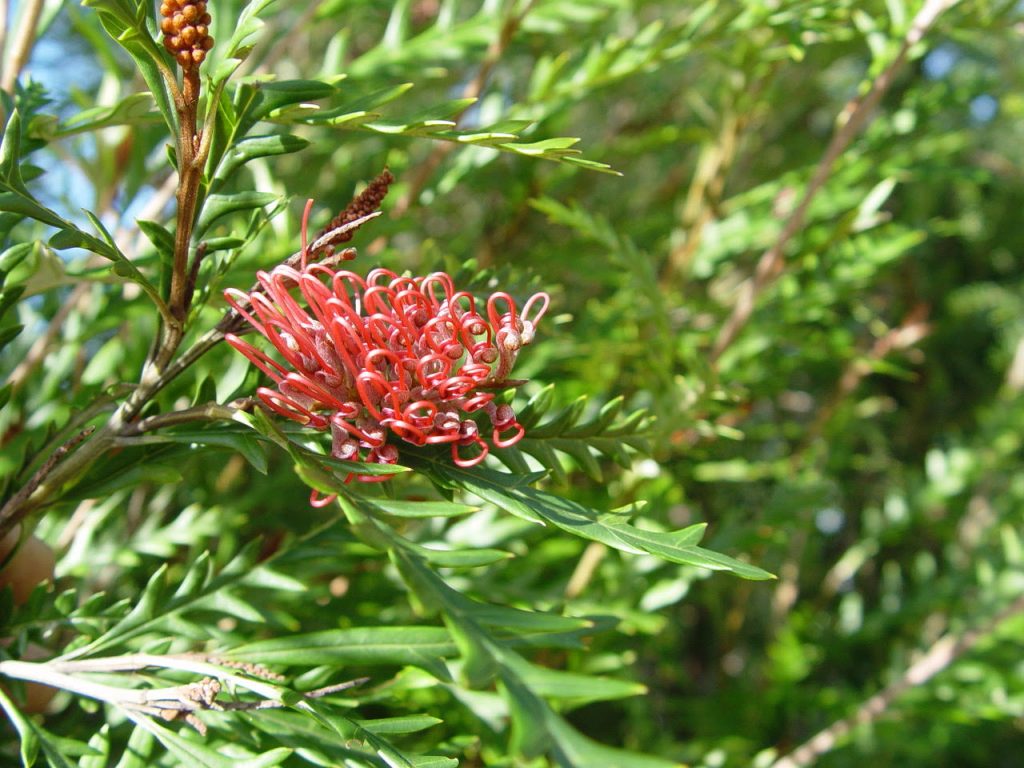
Grevillea ‘Ivanhoe’ – A large shrub that grows to potentially to 5 metres high by 5 metres wide. This cultivar is reported to be a hybrid between Grevillea longifolia and Grevillea caleyi, two coastal NSW species that are both rare and threatened respectively.
Grevillea ‘Kay Williams’
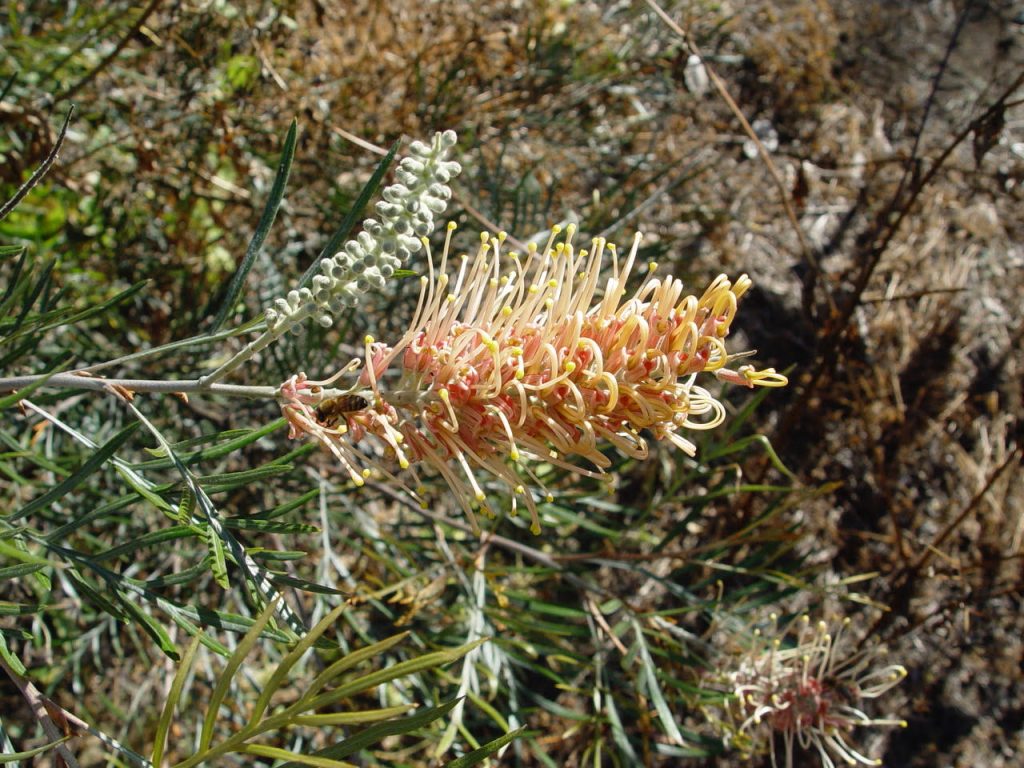
Grevillea ‘Kay Williams’ – A shrub that grows to 4 metres tall by 4 metres wide. The cultivar is very similar to Grevillea banksii which is one of the original parents. It is thought this cultivar is a cross between G. banksii and G. ‘Sandra Gordon’.
Grevillea ‘Majestic’
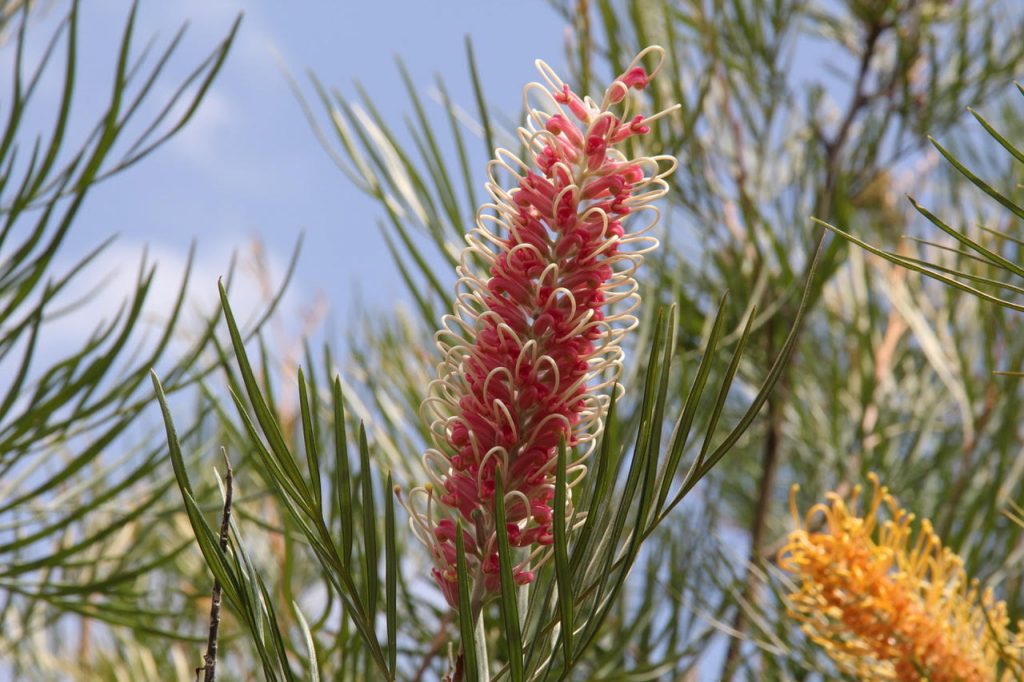
Grevillea ‘Majestic’ – A shrub that grows to 5 metres high by 3 wide. The cultivar is very similar to G. banksii which is one of the original parents. It is thought this cultivar is a seedling of Grevillea ‘Misty Pink’.
Grevillea ‘Sandra Gordon’
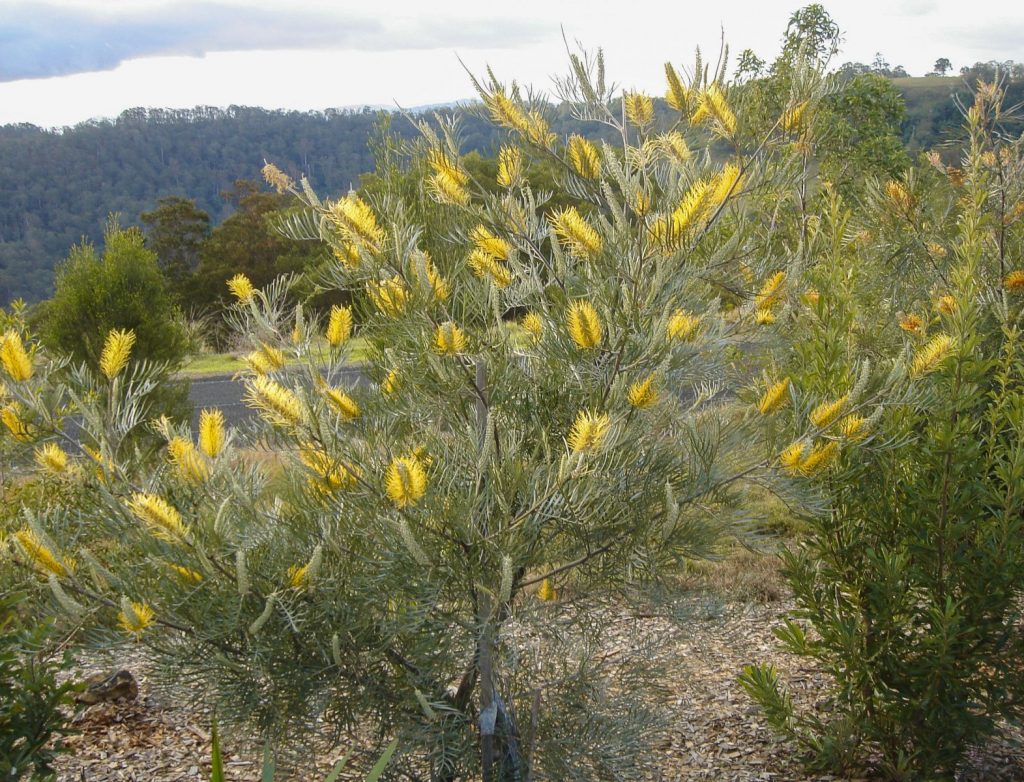
Grevillea ‘Sandra Gordon’ – A tree that grows to 5 metres (potentially 8 metres) high by 5 metres wide. As for Grevillea ‘Honey Gem’, this cultivar is reported to be a hybrid between Grevillea sessilis (a Queensland species) and G. pteridifolia (a Queensland and NT species).
Grevillea ‘White Wings’
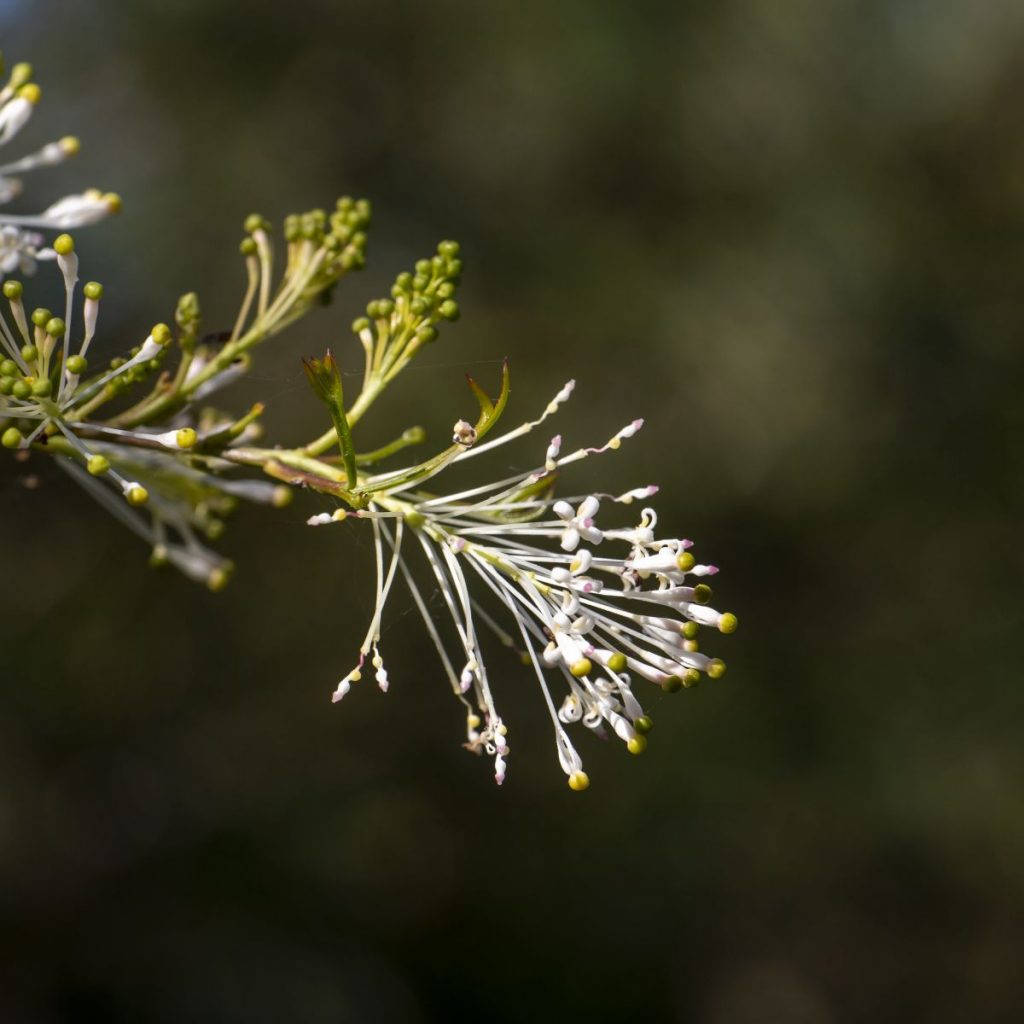
Grevillea ‘White Wings’ – A shrub that grows to 3 metres with a spreading habit to several metres wide. Branches can be erect as well as spreading down or arching towards the ground. This cultivar is thought to be a cross between the WA species Grevillea curviloba and another WA species. Grevillea curviloba grows very well on the East Coast and has been a popular grevillea to grow.
Grevillea ‘Sylvia’
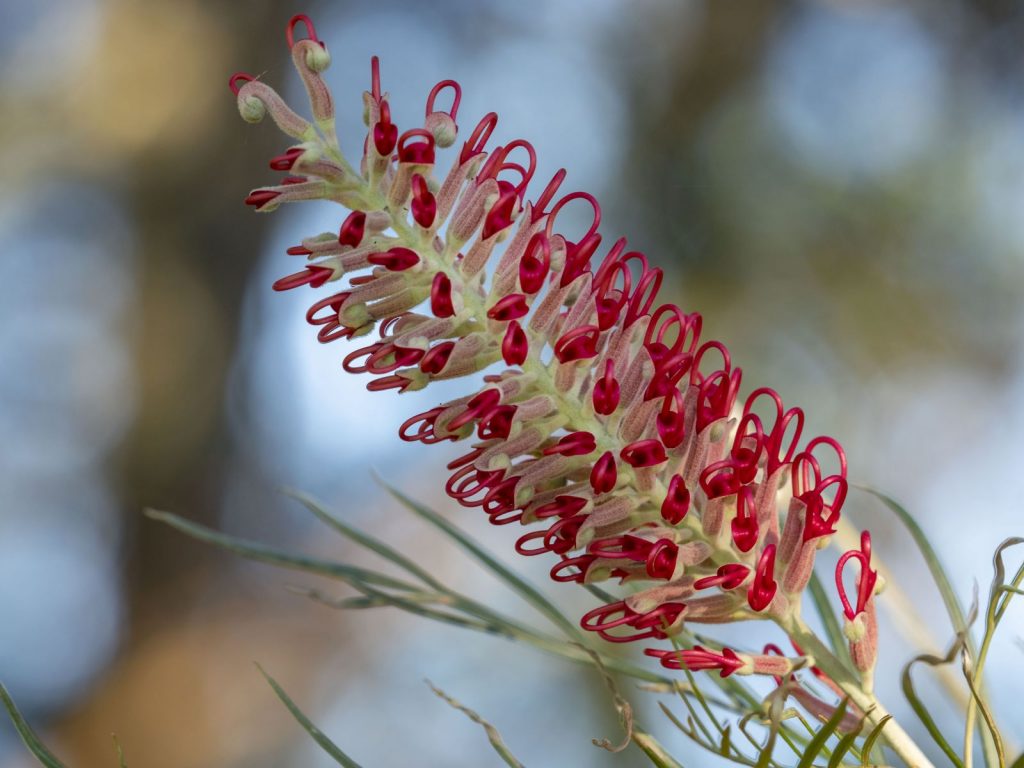
Grevillea ‘Sylvia’ – A shrub that grows to 5 metres high by 4 wide. The cultivar is very similar to G. banksii which is one of the original parents. It is thought this cultivar is a progeny of Grevillea ‘Pink Surprise’.
Grevillea ‘Peaches and Cream’
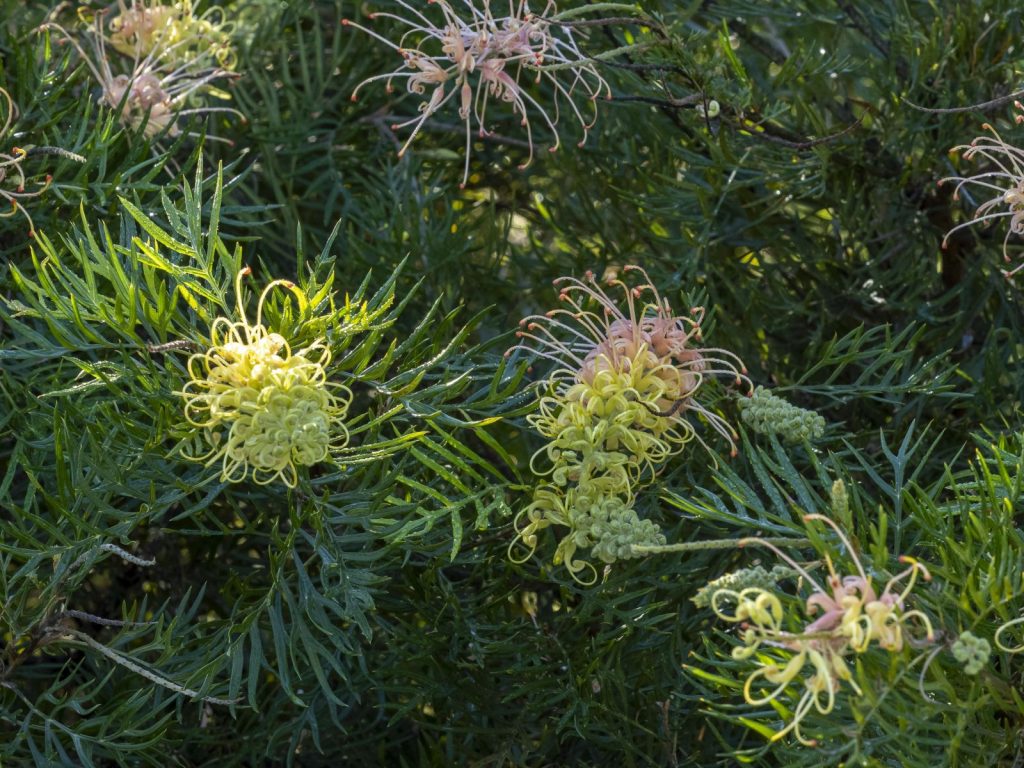
Grevillea ‘Peaches and Cream’ – A shrub that grows to 2 metres high by 2 wide. The cultivar is a cross between a white-flowered form of the Queensland species Grevillea banksii and G. bipinnatifida from Western Australia.
Grevillea ‘Honey Gem’
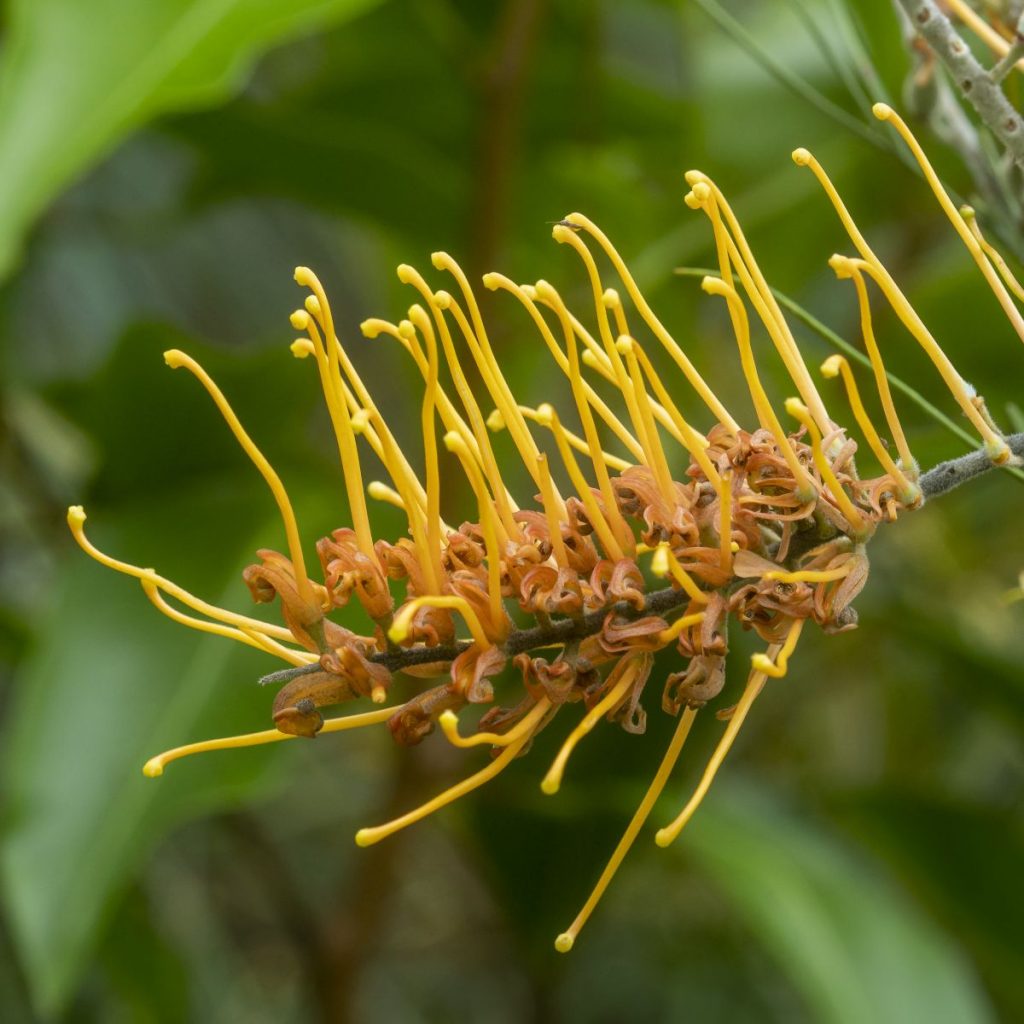
Grevillea ‘Honey Gem’ – A large shrub that grows to 6 metres high by 5 metres wide. This cultivar is reported to be a hybrid between Grevillea banksii (a Queensland species) and G. pteridifolia (a Queensland and NT species).
Grevillea buxifolia
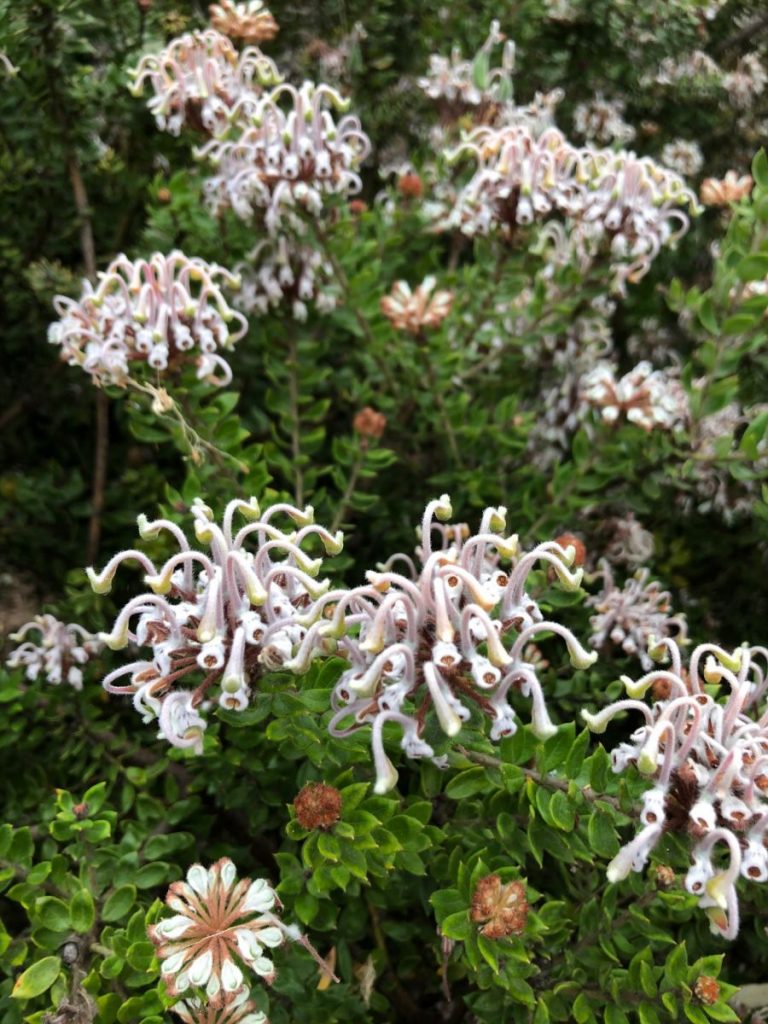
Grevillea buxifolia – A shrub to 2 metres tall and can spread to about 2 metres. It grows in open woodlands, forests and well as coastal heaths, along the central coast of NSW and adjacent ranges. Mainly found on sand and sandstone. The branches are covered in reddish or brown hairs.
Grevillea caleyi
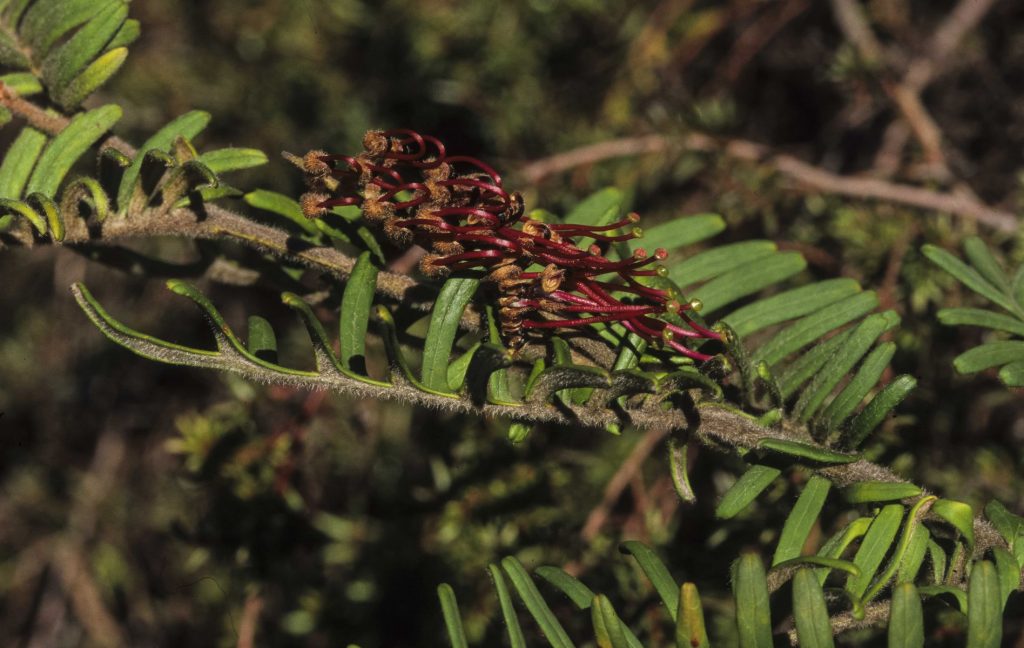
Grevillea caleyi – A shrub to 3 m tall up to 4 m wide with long spreading branches. It grows in a small restricted area, approximately 8 square km, on Hawkesbury sandstone around Terrey Hills, 20 km or so north of Sydney NSW. It grows in a small restricted area, approximately 8 square km, on Hawkesbury sandstone around Terrey Hills, 20 km or so north of Sydney NSW. It occurs in three major areas of suitable habitat, namely Belrose, Ingleside and Terrey Hills/Duffys Forest within the Ku-ring-gai and Northern Beaches Local Government Areas.
Grevillea banksii
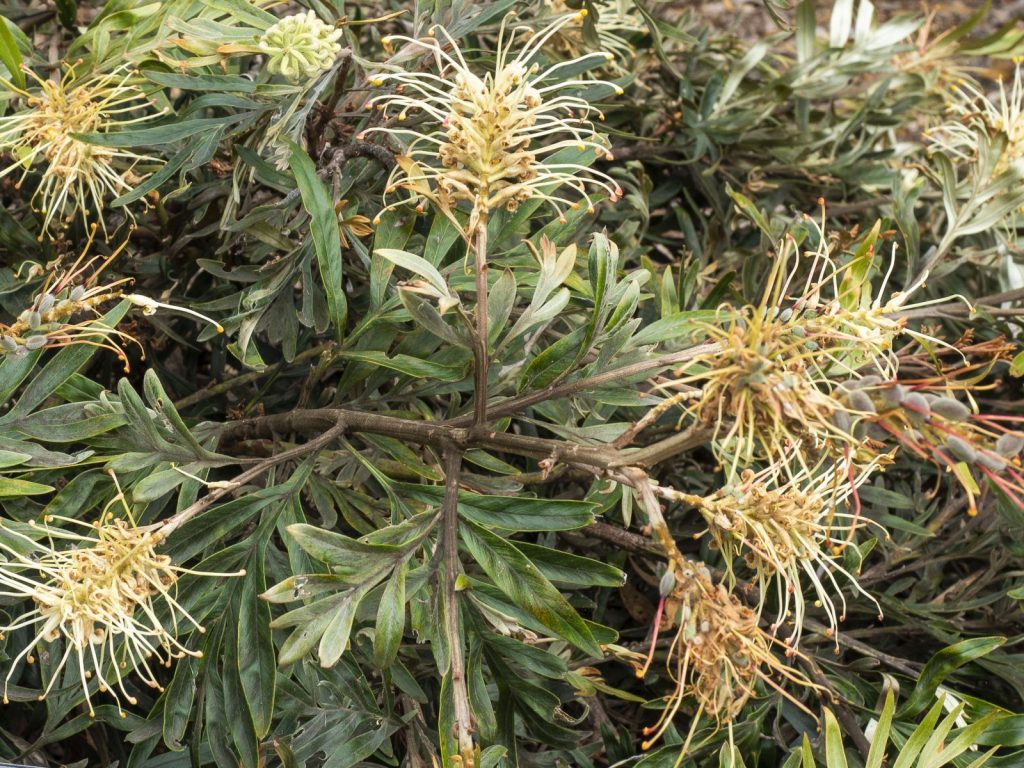
Grevillea banksii – A large shrub 7 m high. There are also prostrate forms found in the natural habitats. It is endemic to Queensland, occurring from Ipswich to Townsville, mainly along the coast in dry sclerophyll woodland and forest and coastal heathland, ridges and slopes.
Grevillea aspleniifolia
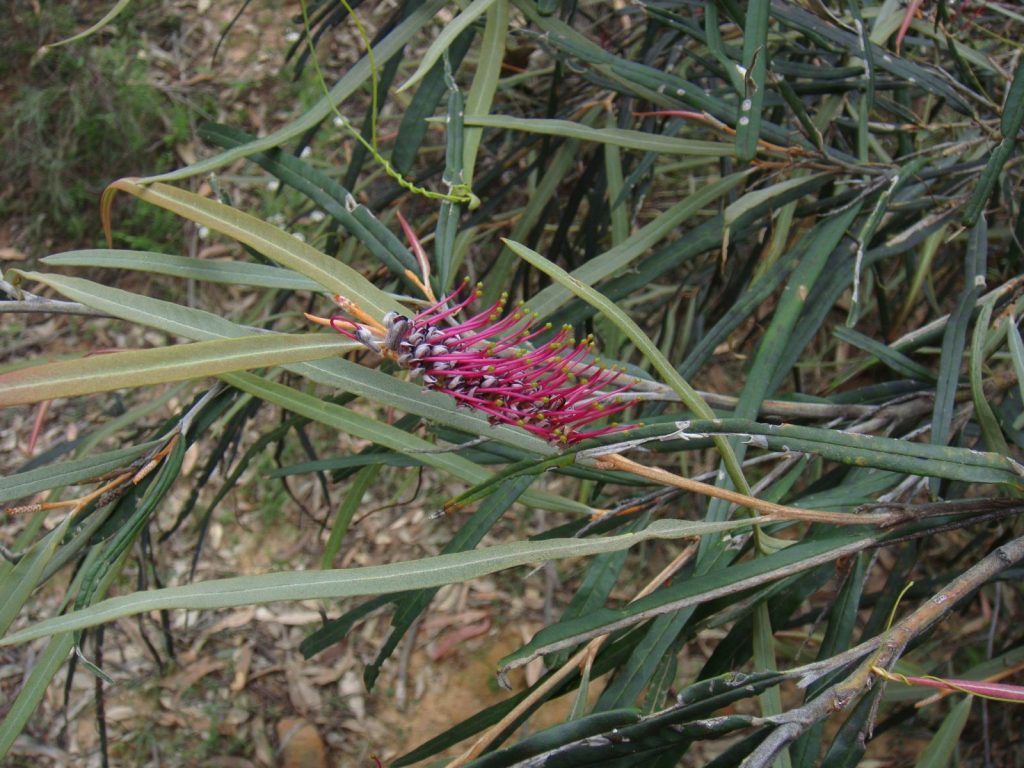
Grevillea aspleniifolia – A spreading shrub to 3 m high and 4 m wide that is endemic to New South Wales. It is found naturally between about Bowral and Katoomba, with a few records further south including near Bungonia Caves. It is common west and south of the Lake Burragorang area and can be seen growing along the roadside near Yerranderie. It typically occurs in rocky eucalypt woodland on shale or sandstone.
